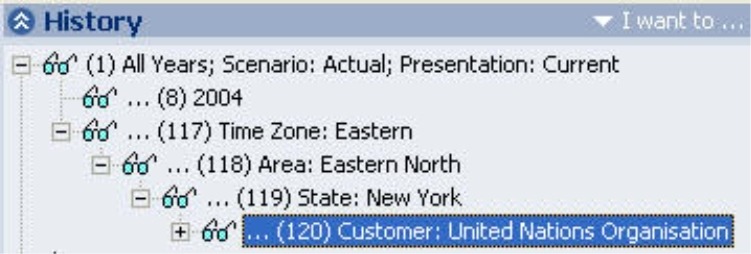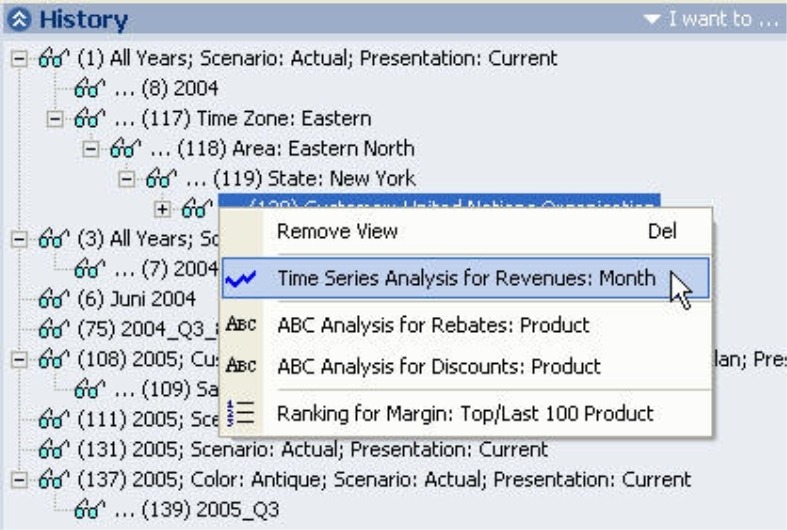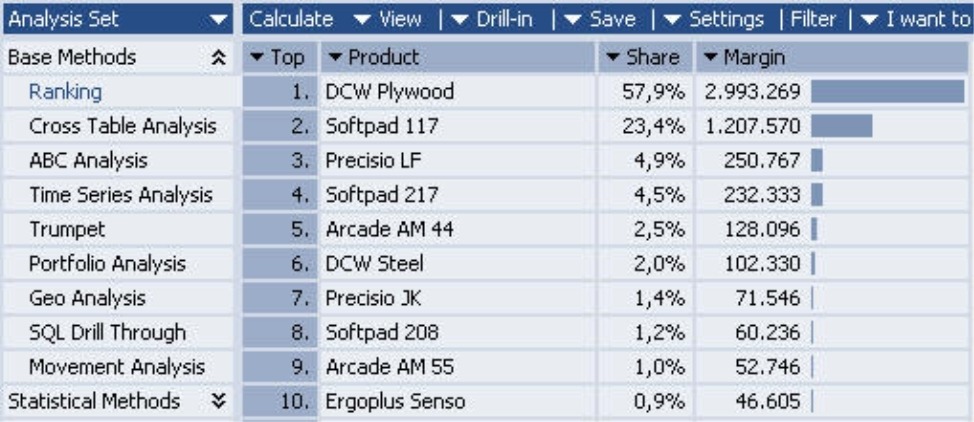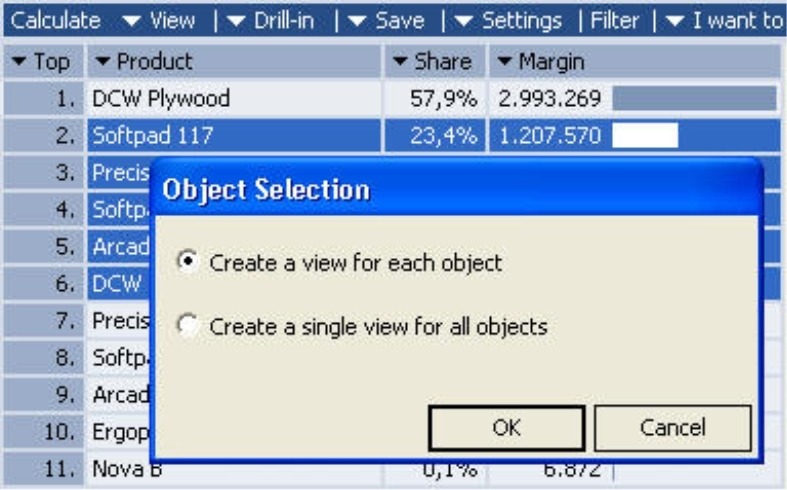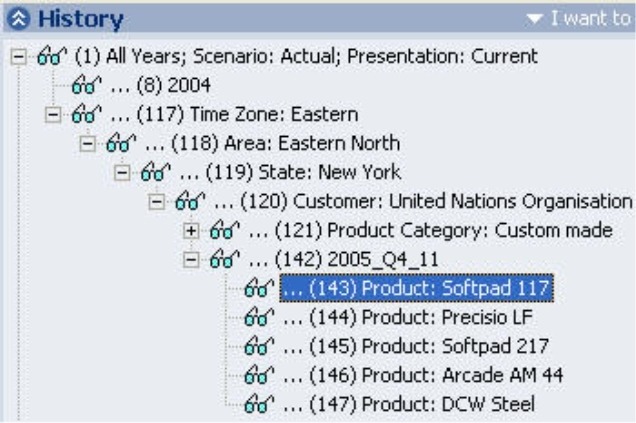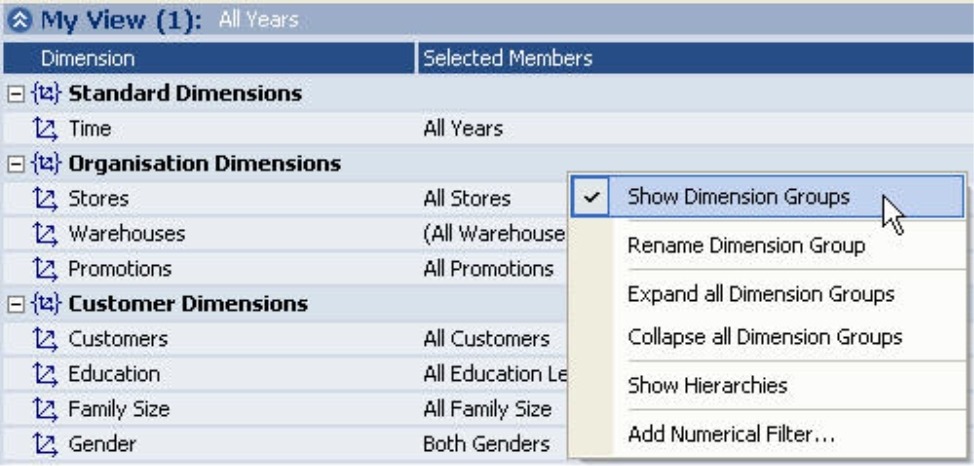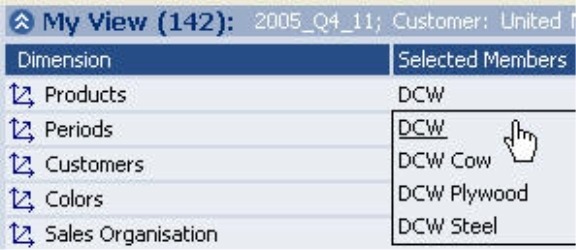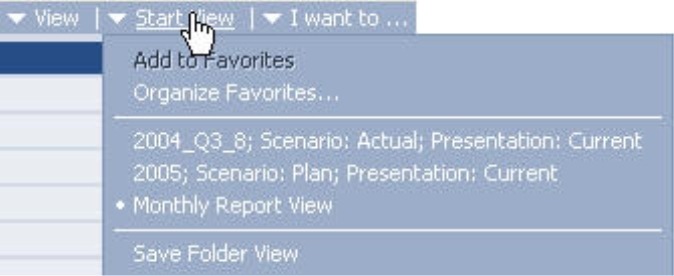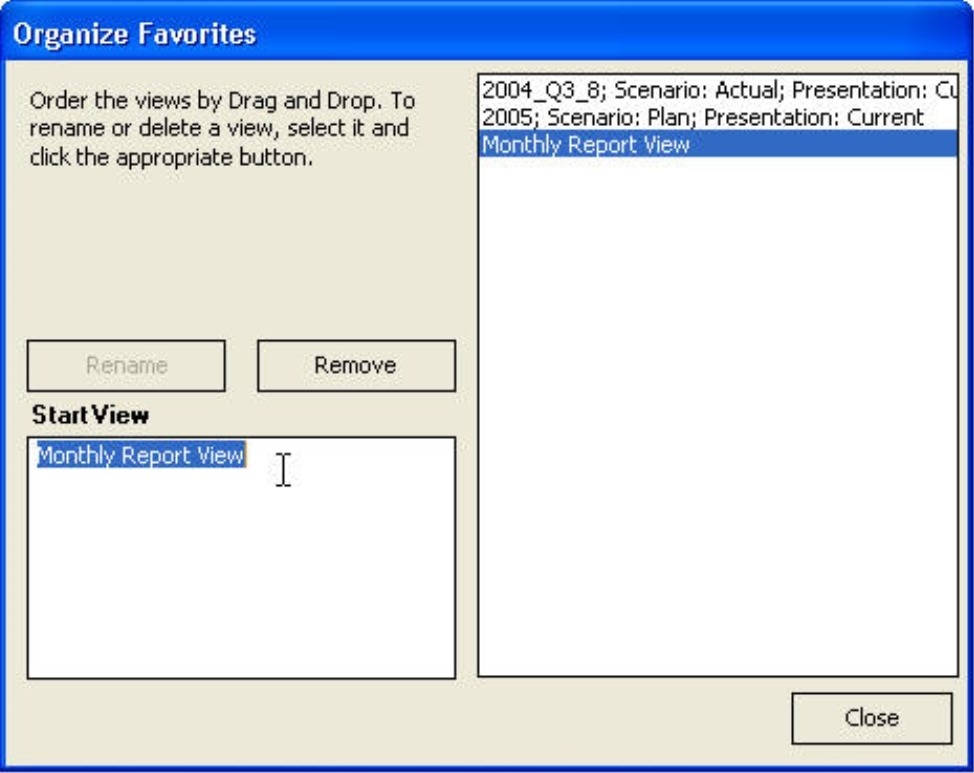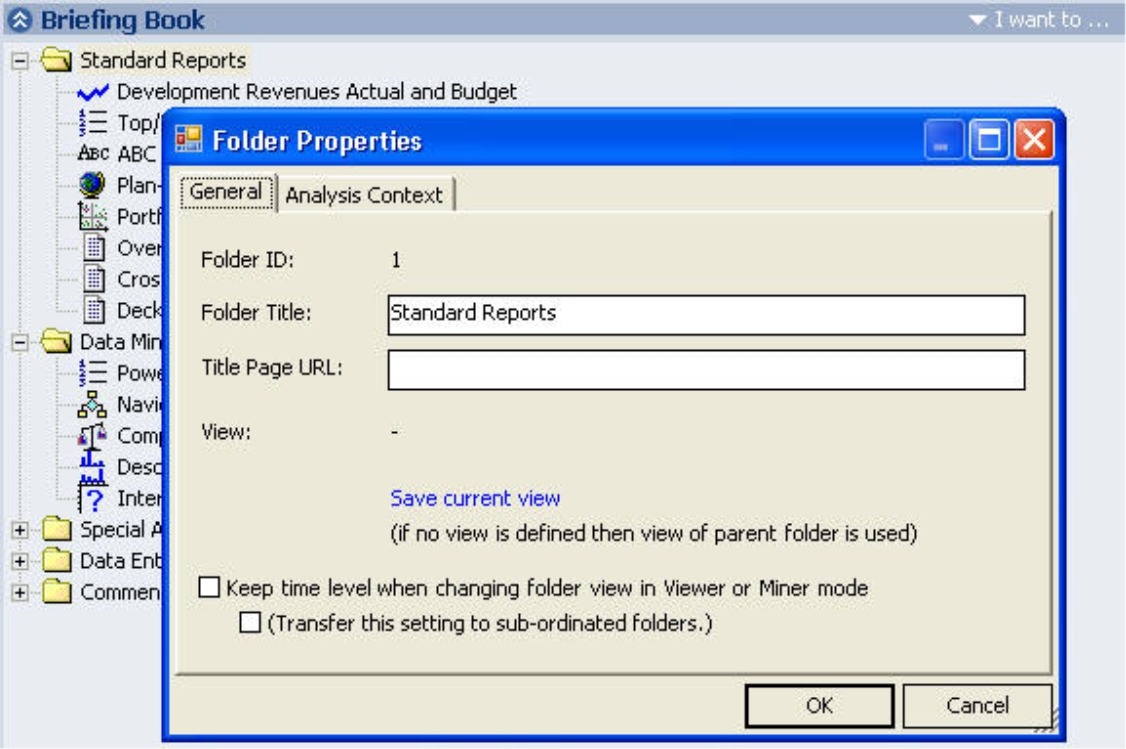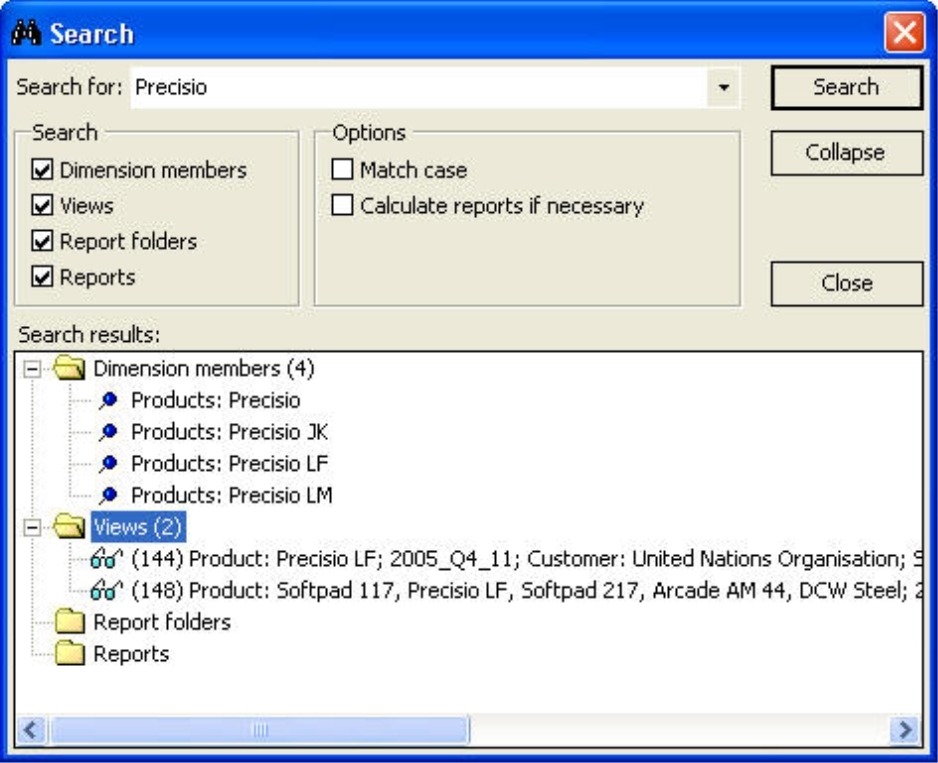Greetings, fellow data analysts!
We often stress that analyzing means comparing. In essence, each analysis is a comparison, because you can only make a valid conclusion when you view your findings in the proper context. According to Merriam-Webster1, however, the word analyze also “suggests separating or distinguishing the component parts of something … so as to discover its true nature or inner relationships” – in other words, searching! How true. How many times do we have to tear apart our data to view or explore one aspect after another until we finally find what we were looking for.
To ensure that we don’t get lost in the data jungle, DeltaMaster offers a series of helpful devices that track and secure our steps for the course of our expedition. Just as Gretel had Hansel and he had his pebbles, we can rely on DeltaMaster with its views and history window. Everything you need to know about this feature is our focus of this edition of clicks!.
Sincerely,
Your Bissantz & Company team
The two fundamental concepts in multidimensional data analysis are dimensions and measures. Dimensions contain members, most of which are grouped into hierarchies, are the criteria for analyzing your measures. From the My View window, you can select the criteria that should apply for cockpits and analyses. We call this combination of selected members a View.
History
In Miner mode, DeltaMaster
chronologically numbers and documents the views from your current session in the History box. You can easily return to a previous view at any time with a mouse click. The entire session is presented as a tree hierarchy. The underlying branches, which contain the same members as their parents, record the step-by-step changes.
You can remove the views that you no longer need in the context menu. Use this feature with caution, however, because this will delete all the reports with this view as well as any reportswith views that branched from it. In addition, you can retrieve any analyses from the current session in the context menu. This allows you to quickly jump back to the view even if you did not save a report.
Threaded Analysis Technology
One particularly interesting feature of DeltaMaster is the threaded analysis, which allows you to create new views based on the findings of your current analysis. The new views are then placed “on reserve” in the History window for later use.
Let’s assume that you have created the Ranking on your right to determine your top products with regards to margin. If you want to see why DCW Plywood is so dominant, simply do a double click to focus your view on your #1 product. But what if you want to view the runners-up, such as your top 2 through 6 with margin contributions over $100,000?
In this case, you simply mark the five products (holding the ALT key while clicking) and use the Drill in Selected Objects function from the My Analysis menu bar.
At this point, DeltaMaster asks if you want to Create a view for each object or Create a single view for all objects, which combines the 5 objects.
These two screenshots illustrate the difference:
- In the first case, DeltaMaster has prepared a separate view for each marked object in the History window.
- In the second example, DeltaMaster has created a combined view with the five objects (multiple selection). In this case, the desired measures will be aggregated for these products in the analyses and cockpits.
Your view
As already mentioned at the beginning of this issue, My View determines the criteria that you need for your current inquiry. This window posts a summary in the title bar, so you can get information about the current selection even when it is collapsed.
Occasionally, some dimension members in the My View window appear in parentheses or brackets. This signalizes that individual selections have been made in the current cockpit (parentheses) or analysis [brackets], and thus the current selection in the view is ignored. Here are two examples:
- You select the members that should be positioned on the axes of the pivot table. These are specifically for this cockpit and may differ from the members in your view. If the three main product groups, luxury, special and standard models, are included in the columns, the values for all three main groups will appear even if only one of these members or members on subordinate levels (e.g. individual articles) are selected in the view. If you want the columns and rows to correspond with the view, click the Synchronize with Current View button in the Axis Definition.
- If you want to examine the history of a given measure using Time Series Analysis, you can customize the settings for the levels (years, quarters, months, …) as well as the beginning/end of the analysis. The time dimension members set in the My View window are then irrelevant, which is illustrated by the brackets.
It is helpful to organize models with a large number of dimensions into groups. Using the context menu, you can activate or deactivate the Show Dimension Groups feature.
By clicking the Alt key, you can drag and drop the dimensions between groups as well as sort your dimension list.
Direct search
In DeltaMaster 5.1.7 and up, you can also use the direct search in the My View window. This function allows you to quickly select individual members without having to open the Dimension Browser.
Activate the My View window so the label in the title row turns dark blue. When you then place your mouse on a selected member in a dimension, you can immediately enter the name of the desired member from your keyboard. Alternatively, you can start a direct search by hitting F3, pressing the Shift key while clicking on the desired member or using the Search Member function in the context menu. Choose your preferred search method under Extras/Options in the General tab.
As soon as you click Enter, DeltaMaster searches the members of the affected dimension. If DeltaMaster only finds one member, it will select it automatically. If several objects fit the description, DeltaMaster will display them in a list from which you can select the appropriate member.
Start View, Favorites
You can maintain your personal list of views under Start View and Favorites. This gives you quick and easy access to views that you need again and again for your daily work or specific tasks. This concept is very similar to the bookmark feature in Web browsers. Your Favorites as well as the functions to save and administer them are available in the Start View menu of the My View window.
If you want to restore a certain view, simply select the appropriate entry in the menu. When you click on Start View without opening the menu, DeltaMaster opens the first favorite from the list. To add new favorites, create the desired view and then click on the Add to Favorites option. DeltaMaster automatically names the new entry after the title bar of the window – including all of the selected members that are not top members and their respective dimension names. If the suggested name is too long for your taste, you can rename it by clicking the Organize Favorites command. This opens a dialog box where you can rename, sort (via drag and drop), and delete your favorites.
Views in Folders
The favorites described above are particularly useful in cockpits. Since the results of your analyses are saved with a certain view in your briefing book, you do not have to manage the selected members manually. One last issue to clarify: Which view should be valid when a user clicks on a folder and not on a report in the briefing book? This is especially important when distributing reports to users working in the Viewer mode. They often expect a “clean” book without big jumps between the objects.
For this purpose, you can set the view in the Folder Properties – either from the context menu of the appropriate folder (by saving the current view) or from My View ?Start View ?Save View in Report Folder.
The Folder Properties also determine the start view when a session is opened. After loading the .das file, DeltaMaster automatically selects the first folder in the Briefing Book and activates its view.
Changing Views in Viewer Mode
Miner users should note that DeltaMaster reacts a bit differently in the Viewer mode. When a user changes the view while the folder in the Briefing Book is highlighted, this new view then applies to all reports in that folder.
Searching Views
The search function, which is available in the Edit menu and as an input box in the top right corner of the DeltaMaster window, can also incorporate your saved views. This way you do not have to manually search through a combination of members in the history window to locate a certain member.
Questions? Comments?
Just contact your Bissantz team for more information!
